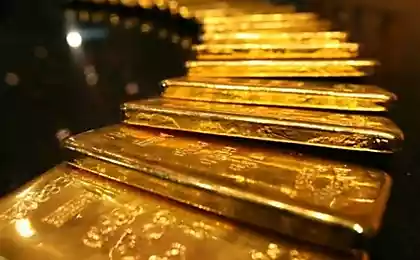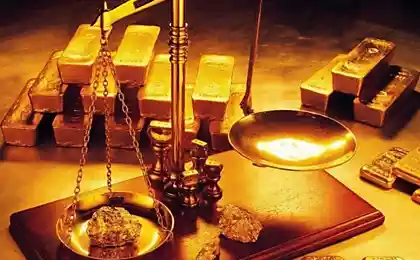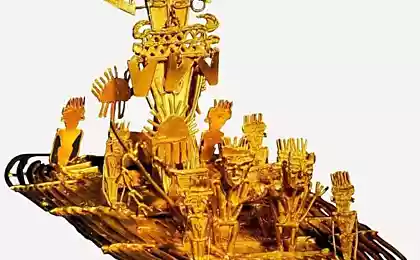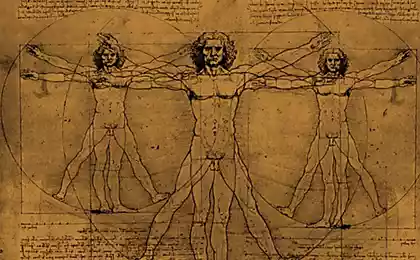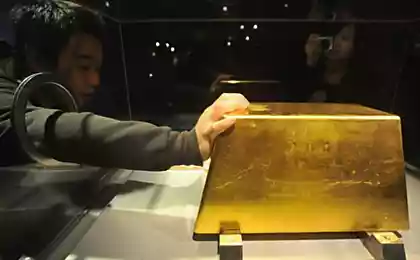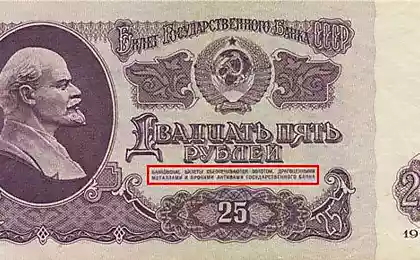783
The mystery of the gold or a brief history of the gold standard
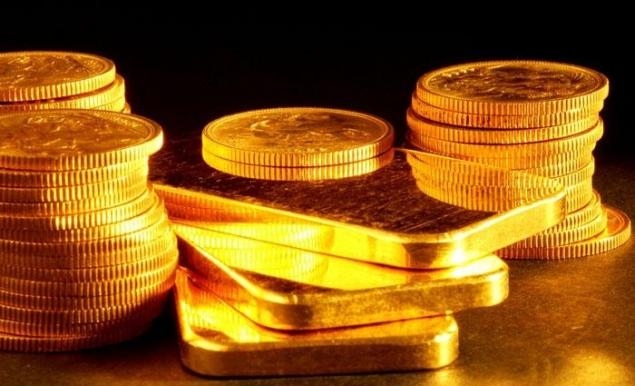
Alexander Vladimirov, Valentin Katasonov, and the notorious Bretton woods "TOMORROW". Valentin Yuryevich, tell us what preceded the Bretton woods? Or what it is, a brief history of the gold standard?
Valentin KATASONOV. In all textbooks it is written that at the Bretton woods conference in 1944 was born zolotodollarovy monetary system. It is noted that this kind of international gold standard. Not just a kind, and his last form. To better understand the uniqueness of the Bretton woods monetary system, it would be nice to understand what role gold played in monetary history.
World money: gold and banknotes.
In this story, there were two types of money a) commodity money; b) money-signs.
Commodity money – of various goods, which spontaneously separated from the diverse world of products and began to perform such functions as measure of value and medium of exchange. The main feature of such money is that they have intrinsic value. Unlike commodity money, the banknotes of intrinsic value do not have, at least, their intrinsic value is below par. Money – only the cost. Usually to mind in this regard coming paper money, the intrinsic value of which is determined by the cost of paper and printing works. If you dig into history, we can find other examples of banknotes. For example, skins of squirrels, which was used in Russia not only for sewing of fur coats, but also as money.
But when it comes to commodity money that everyone comes to mind the gold. In the form of ingots, bricks, sand, coins. In any textbook you'll find an explanation of the popularity of gold as money. It is a portable, homogeneous, easily divisible into parts, resistant to corrosion, plastic (you can mint coins and to put stamps on ingots), etc. besides It is not so difficult to distinguish true gold from the fake. Finally, it is quite rare in nature. Unfortunately, the textbooks call gold classic commodity money without any reservations. And as long as the money took the form of gold coins, gold was extremely rare in a pure form of commodity money. It's very simple: the face value minted on the coin is almost always found to be greater than the real value of the gold contained in the coin. Those who had the right to mint coins, received due to this difference, the so-called "seigniorage". The difference of the value from the gold content often talked about the "deterioration of the coin". Thus, even in the heyday of metal coins gold commodity was partly money, and partly money signs. For the right to mint coins throughout the long history of the struggle was waged. Lenders who received interest from providing money in the form of loans, dreamed about how to obtain the right to mint coins. Historians who write about the bourgeois revolutions, often forget to say that one of the driving forces behind these revolutions was the desire to take away from monarchs and feudal lords the right of coinage.
In General, the monetary history of mankind observed a constant trend toward the substitution of commodity money is money signs. In principle, for a growing economy, such a substitution is vital. Because the growth of gold extracted by mankind from the depths, very small. Trying to serve the growing needs of the society and economy with complete commodity money is put on society and the economy of the Golden yoke. Such gold the money will be partly applied partly a noose for companies. Gold is extremely scarce, and this scarcity of its owners can obtain fabulous profits.
"TOMORROW." As for seigniorage, which occurs in the issuance of banknotes, of course, it can become a real "Klondike".
Valentin KATASONOV. Of course! On the background pale the income of the most successful gold producers.
All new and recent monetary history of mankind is a coexistence of the two types of money – commodity (gold) money and currency. Every form of money has its own interest groups. In some periods of time prevail the groups of interests that are enriched by the gold. In other periods – those who get access to the "printing press" that produces banknotes. It could even be one group of interest. She first makes a bet on gold, and when opportunities to profit due to the monopoly of owning the "yellow metal" is exhausted, it switches to use the money. And when the possibility of "printing press" are exhausted, then begin again talks about the fact that "nothing is better gold money does not happen." This kind of metamorphosis can be called "money swing." The world oligarchy is playing in these "swing" for a long time, the game is traced back to the bourgeois revolutions in Europe. In modern monetary history it is possible to identify three main phases: 1) money; 2) commodity (gold) money; 3) money.
Zolotodollarovy (Bretton woods) monetary system – the last phase of the second stage (stage of gold money). To better understand the role of the Bretton woods monetary conference in the history of mankind, let us consider what was before her.
After the bourgeois revolution in Europe began to be widely used paper money. We should not think that this is due to some scientific-technical revolutions. Just loan sharks came out of hiding, made a revolution, established the "printing press" and organized mass production of banknotes. Even if the money was not paper, and metal (silver, copper, gold), they are increasingly acquired characteristics of the characters, as there were "defacing coins."
"TOMORROW." But moneylenders are not afraid to engage too honest "money alchemy"?
Valentin KATASONOV. Was a little afraid. Therefore introduced some restrictions on the use of "cash machine" through the establishment of rules covering issues of paper money in gold, which was in the vaults of the banks. In addition, the lenders engaged in "re-education" of society, arguing that "the best paper money is nothing". For "re-education" they began to encourage the creation of different theories. Recall Adam Smith. He argued that humanity could do without gold. There was another well-known historian and economist, Lieutenant-General Alexander Dmitrievich Nechvolodov. Deeper he managed to penetrate the secrets of gold.
Nechvolodov particularly drew attention to the commitment of Adam Smith paper money. There is one fine point, by which are many historians and economists: the industrial revolution in Angliawebsites paper, not gold money. Nechvolodov this idea is formulated even more harshly: if England had a gold standard, no industrial revolution there would not have been possible.
"TOMORROW." And when completed the stage of paper money in England?
Valentin KATASONOV. In 1821. The stage of gold money. First, the gold standard emerged in England, and by the end of the century it spread to many countries, became international.
"TOMORROW." And who was the ideologist of the gold standard?
Valentin KATASONOV. David Ricardo. Not only was he inclined to gold currency, but even gave a detailed theoretical justification of its advantages compared to paper money.
"TOMORROW." And what's up with that?
Valentin KATASONOV. Adam Smith and David Ricardo lived at different times, the situation has changed dramatically. What new has happened in the days of David Ricardo? It was the time after the Napoleonic wars. In the sky of the financial world appeared Rothschilds, who fabulously enriched by these wars. However, they managed to concentrate in their hands most of the European gold. But the precious metal, according to the plan of the Rothschilds, should not lie dormant, it should be the capital and make a profit. It is necessary to ensure a constant demand for gold. And this, in turn, society needs to instill that the best money is gold, which is possible to perform not only the function of accumulation, but also the function of measure of value, means of payment and medium of exchange. First there was "scientific" substantiation of gold money, and then followed the steps for practical implementation of the gold standard.
Speaking about transformation of English political economy, you can add this detail: David Ricardo was first and foremost not an armchair scholar, and stock speculator. In addition, David Ricardo was personally acquainted with Nathan Rothschild. By the way, Ricardo initially, repeated "dogma of Adam Smith" and claimed that it is possible to do without gold. Then Ricardo started to lean towards silver. But this view Ricardo changed in 1819. Perhaps, after Ricardo, the most consistent advocate of gold money was Marx.
"TOMORROW." So, Adam Smith belonged to any particular camp, the "political economy" than David Ricardo?
Valentin KATASONOV. Just predecessor Ricardo argued that economic policies that needed cash to capital at the first stage of the development of British capitalism. Nechvolodov believes that Smith is not worse than Ricardo understood what gold is in the hands of the moneylenders.
The gold standard is a monetary system that involves the use of gold not only and not so much as a direct medium of exchange, but as a means of ensuring the paper currency issued by the Central Bank. The gold standard provides a fixed percentage of coverage of the issue of paper money precious metal, which is located in the reserves of the Central Bank. Proponents of the gold standard justify the use of the fact that, well, this monetary system guarantees protection against abuse of power "printing press" and ensures public confidence in banknotes.
"TOMORROW." So let's talk about the "secret of gold".
Valentin KATASONOV. Many think that the gold standard such a monetary system in which paper money in the internal circulation are replaced by metal coins, and in international payments apply to the standard gold bars. Such representations were common in Russia in the late NINETEENTH century. General Nechvolodov repeatedly stresses that the main feature of the gold standard is that the "yellow metal" is legalized measure of value, a kind of universal measure of value. However, this is not a metal ruler. And it is this idea of the gold is trying to form a K. Marx in "Capital", calling the metal "the universal equivalent of value." Arguing with Marx, Nechvolodov notes that, rather, it is "rubber" meter, it is very beneficial to the owners of the gold. It's hard to imagine a more unreliable standard of value. Because the cost of production physical units of metals are highly dependent on natural and geographical conditions of production. Moreover, in contrast to other products of labor, gold is indestructible product. Nechvolodov says that all other products are consumed after their production (e.g., bread) or amortiziruemoe (even the Egyptian pyramids). Therefore, the cost of 1 gram of monetary gold mined many hundreds or thousands of years ago should be multiplied by the number of transactions carried out with that gold. The cost of 1 gram will go to infinity. Certainly it cannot be assumed that its value is equal to the number of hours of the employee, which it was mined. Marx all these subtleties and doubts have been avoided. And this is understandable because a classic performed the social order of the Rothschilds.
Nechvolodov drew attention to the fact that although most of the gold was concentrated in the hands of a small group of world bankers, the share of gold in total wealth was negligible. Gold played the role of a "magnet", prityagivaya the wealth of the world. In the early twentieth century, the amount of the monetary obligations of all States to the world bankers to two times the cost of gold on the planet.
The whole world economy can be presented in two parts, or poles. One pole – all the products of labor, goods created by the mankind. The other pole is gold in the hands of bankers. Between these poles exist in every point in time, the balance of parity. The supply of gold does not increase. According to such natural causes as scarcity of the precious metal in the world. But the production of goods increases, the physical scale of the products of human labor increase every year influenced by population growth, technological progress and other causes. The result is the purchasing power of each ounce, each ounce of the precious metal automatically increases. This is the principle of "Golden magnet", this is the "secret gold" in a simple and understandable presentation of General Nechvolodov.
"TOMORROW." What are the basic stages you can divide the periods of the gold standard?
Valentin KATASONOV. These three stages. The first has a fairly clear chronological framework: 1821-1914. (gold standard). The second 1925-1936 gg (gold bullion standard). Third — 1944-1971. (zolotodollarovy standard).
It turns out that the total duration of the "Golden period" of new and modern monetary history of humanity is exactly polarstate: 1821 – 1971 But within this "Golden period" was two big "holes" when the Golden money, were cancelled or the action of the gold standard "stopped". The first "hole": 1914 – 1925, the Second "hole": 1936 and 1944 a total of approximately two decades, during the war, the restoration of the destroyed economy, depression.
"TOMORROW." Tell us more about the first stage.
Valentin KATASONOV. This time the so-called solutionyesterday. The main features of this kind of the gold standard are the following:
The standard monetary unit declares the gold coin of a certain weight and determined content of the precious metal.
— Gold coins are traded on the basis of free coinage, and hoarding (saving in the form of treasures) excessive gold in the treasure is no constrained.
— Gold coin performs all five functions of money (measure of value, medium of exchange, means of payment and means of hoarding, international money).
— All types of credit money exchanged for gold coin at par.
The first gold currency introduced England in 1821. Prior to that, as experts note, in England there was a money system based on silver or bimetallism (silver plus gold). Some sources give an earlier date of transition the UK to a gold standard. Even in 1774. However, until 1821, only taken decisions on the introduction of the gold standard, which, for one reason or another, were cancelled or not performed.
This was possible because the Rothschilds in the person of Nathan Rothschild, who seized control of the Bank of England, had in this land of endless influence. It happened at the peak of the industrial revolution. Even thirty years of inertia in England continued industrial development, although the country is gradually losing its position of "world's workshop", the trade balance began to deteriorate, there has been an outflow of gold from the country. Especially the economic situation in England had deteriorated, when in the 1840s was abolished so-called "corn laws", which established protective tariffs to protect the domestic market. The era of free trade. In 1857, England was faced with a banking crisis, began a massive outflow of gold. Stop it was possible only by raising interest rates on Bank deposits. Money within the British economy became extremely expensive, this moment began the slow death of British industry, London has become an international financial centre, British capitalism began to take on signs of parasitic capitalism. So in short Nechvolodov described the history of English capitalism, linked to the gold standard.
"TOMORROW." A curious thing happened at the Paris monetary conference of 1867.
Valentin KATASONOV. Yes. The Rothschilds were interested in the fact that the gold standard has adopted a large number of countries. However, you want to voluntarily put yourself in the neck "Golden noose" was. Recall that Britain in the NINETEENTH century it was the metropolis that ruled the world's greatest colonial Empire. Using their "administrative resource", London has managed to impose the gold standard countries such as Australia (1852) and Canada (1854), which were part of the British Commonwealth on the rights of the dominions. Besides them the gold standard was even established in Portugal (1854). And that's all. The gold standard at international level was not yet half a century after its introduction in England. Most countries in the organisation of the monetary system in the NINETEENTH century focused on the silver or the simultaneous use of two metals – gold and silver (bimetallism). In silver block consisted of Prussia, Russia, Austria, Netherlands, Denmark, Norway, Sweden, Mexico, China, India, Japan. - Bimetallic bloc was the United States and the so-called coin Latin (monetary) Union: France, Belgium, Italy, Switzerland, the Papal States, Greece. Also, the bimetallic block belonged to some countries that are not formally included in the Latin coin Union: Spain, Bulgaria, Romania, Finland.
So what happened in 1867? The authors of all textbooks simply report that Paris hosted the international monetary conference, which started the procession of the gold standard around the world. And the international monetary system that existed in the period between this conference and the start of the first world war, was called "Paris". Some researches about the Paris conference of 1867 was held by the MGIMO Professor O. V. Butorina. In her blog, we read: "...in foreign economic literature, I have never seen a mention of anything about the Paris conference of 1867, nor of the Paris international monetary system." She further continues: Search on the Internet gave nothing. The words "Paris, 1867, the conference" appeared only links to the world exhibition in Paris 1867. Then I asked the question to colleagues, but they didn't know the answer. No one saw the reference to the source of the scheme, and nobody read the documents of this conference. Its composition also presented a mystery, especially because the first on the gold standard in Europe moved to the UK in 1816. Therefore she, and not France have not yet gone on the gold standard, was to be the organizer of such a forum.
Recently I came across three reports of the Paris conference of 1867. In the book K. Eagleton, John. Williams "Money. The history of civilization" States that "in 1867 was put forward bold proposals to create a "common currency" based on gold coins of great Britain, France and America, but, unfortunately, failed to implement". According to George. Of Galbraith, "the gold was legally recognized as the only form of world money at a fairly little-known conference in Paris in 1867". And the online book of William Scott "Money and banks", 1903 edition of the story that at the conference dedicated to the world exhibition in Paris, France offered the United States and the UK to bring the weight of their gold coins so as to proceed to the likeness of the one world money. The idea was supported, but to implement it, no one has started".
Could not agree more with the above. I just want to Supplement the material O. Butorina some details. Two years before the conference, i.e. in 1865 in Paris took place another conference. It was established by Latin coin (currency) Union, which was legalized bimetallism in the group of European countries, and the core of the Union by France. The question arises: how in two years a conference was held, which "beat" the solution of 1865, about the creation of a bimetallic standard on an international scale? Some details of the conference 1867, we learn some Russian authors of the pre-revolutionary time (especially S. F. Sharapov). Indeed, the role of the Paris conference in 1867 in current textbooks is clearly exaggerated. It was only a "side event", dedicated to the then world fair in Paris. At the conference there were representatives of twenty States (including Russia). And the main speaker was Napoleon III who, as we learn from various sources, was an agent of the Rothschilds, and used them to lobby for their interests. At the conference of 1867 Napoleon III "agitated" participants for the establishment of the gold standard internationally. However, as written by our pre-revolutionary authors, conference attendees listened politely to the messenger of the Rothschilds. The majority of the delegates really voted for gold, but it was only a sign of politeness, there is no international agreement has yet been concluded. Russia and the Netherlands from supporting the gold refused.
"TOMORROW." But then intervened in the case of the "Golden" Chancellor O. Bismarck? Not was he involved in the service of the Rothschilds?
Valentin KATASONOV. To answer your question. The process has moved off dead center only in the early 70-ies of the last century. In 1870-1871. occurred the Franco-Prussian war, which ended with the victory of Prussia and the creation of a unified German state under the leadership of the "iron" Chancellor Bismarck. It is more correct to call it "gold" because he initiated the introduction of the gold mark in 1873. Providing it was the gold that Germany has received in the form of reparations from defeated France – a total of 5 billion gold francs. Here the narrative Nechvolodova about the history of the transition of Germany to a gold currency would like to add information that we find in the works of the associate and contemporary of Alexander D. – S. F. Sharapov. Sergey Fedorovich reveals some juicy details of the Franco-Prussian war. These details show that the war was a devilish project of the Rothschilds. Bismarck was influenced by them. They offered him a deal he couldn't refuse: a unified Germany in exchange for gold currency. Thanks don't advertise the support of the Rothschilds, Bismarck was gained without much difficulty, victory over France. France was devastated, to pay billions in reparations gold she was not able to. Again helped the Rothschilds, who in Europe had organized the loan in favor of the defeated France, and collect the gold she gave just created the Second Reich. And he could not fulfill the promise given to the Rothschilds. That is, to introduce a gold mark. Then the introduction of the gold standard Bismarck "chipped" all over Europe.
Interviewed By Alexander Vladimirov
Source: zavtra.ru/content/view/preslovutyij-bretton-vuds/
The rhythms of the updates of the human body
Indigo is my favorite hallucination: Oliver Sacks on altered states of consciousness

